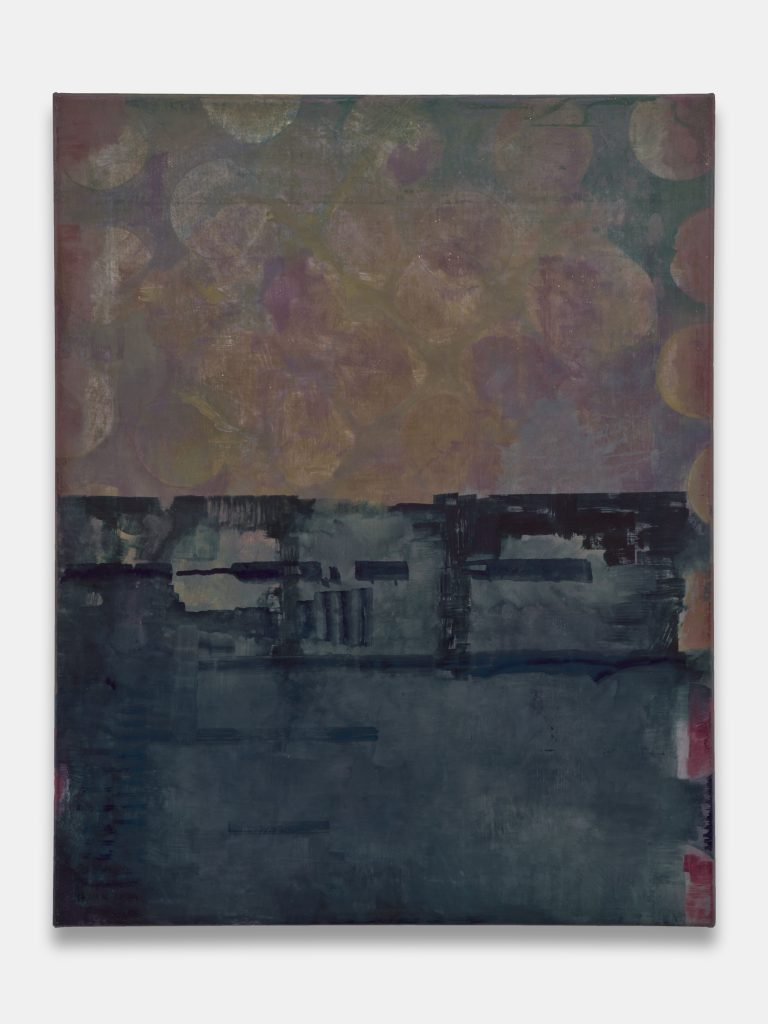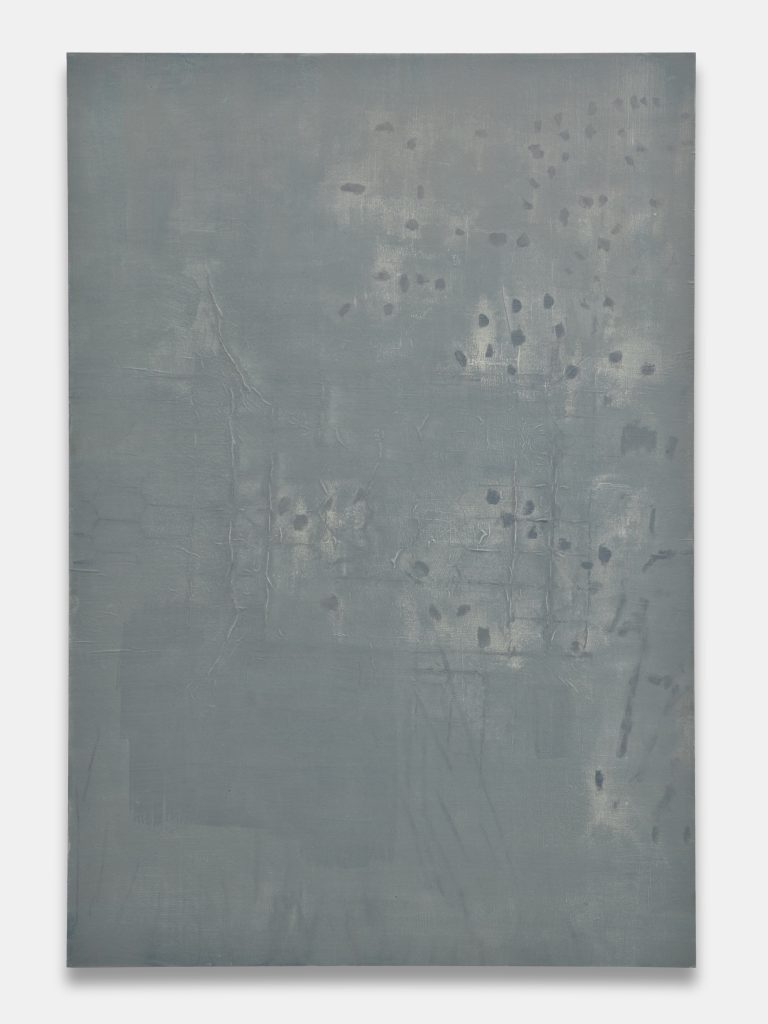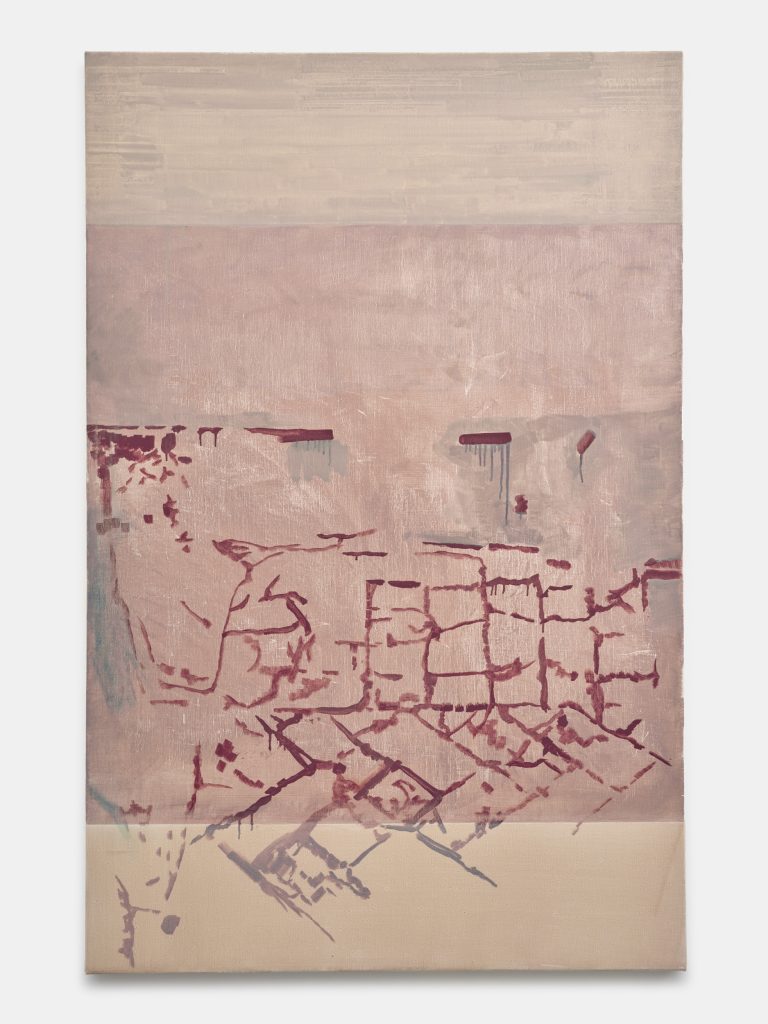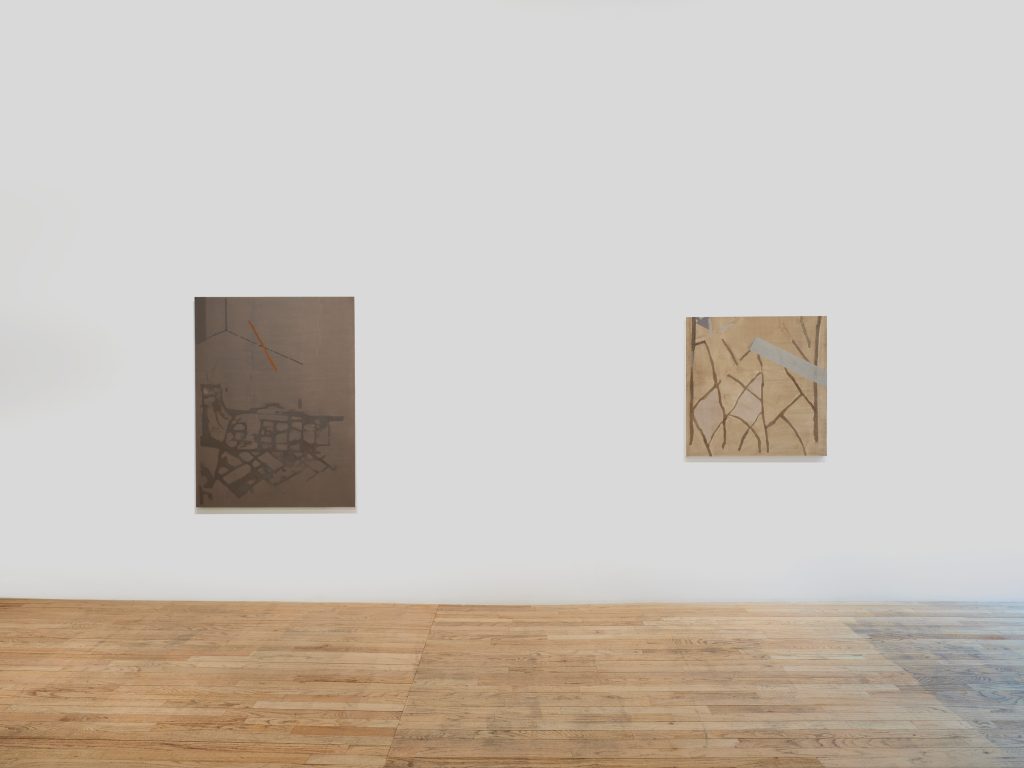New York artist Enzo Shalom’s oil paintings in a recent exhibition at Bortolami in New York City hang in unassuming allure and pictorial quiet, looking like they are somehow fading from view while you’re gazing at them but still drawing you in, ever closer. They deny precision but still shine clearly, a beckoning light sitting against a subdued backdrop amid which the blanketing light itself becomes consuming, even without in most cases any kind of obvious nod towards a realistic place. But for the moments put forward in this art, that light — of the clarity of knowledge without the burden of the demands of hyper-realism — becomes all that you even want.
Though largely not directly reflecting the external, three-dimensional world, Shalom’s paintings are full of… maybe not light itself, but the distinct impression of it. Here, light — which I feel is visually nodded towards, even in the highly abstract works — becomes the force giving meaning in the spaces in between: even the in between spaces that are so fleeting or so limited in scope that they’re sometimes just forgotten. Shalom’s art cultivates it all at the forefront instead. A lack of clarity becomes what’s seen clearly.
In the paintings, place — what’s external to us — becomes a process, and process becomes disembodied. It’s somewhere, but it’s not here, right in front of us. Shalom’s paintings are further away, I think, than what’s seen in a lot of familiar painting and fine arts. And I don’t mean that in the sense of visual perspective, as though we’re just looking at a scene from quite a ways away. But rather, the assumption of the person standing in front of the artwork or otherwise on our side of the interaction as central and primary is not there.
The art suggests the ghostly, the unknown, and it all feels like a natural progression and a cognizable correlate from whatever came before, situating itself into place. And it’s like we’re watching from a perspective in a category entirely different from any individual’s own when we’re looking. We’re seeing the other side… and it’s not so “other.” We can at least observe.
As much as the far-reaching disconnect and aesthetic distance could be startling, I didn’t sense much tension in these artworks. What I was looking at felt instead like it was long there, in the background: the option of an other and the potential for the present and the sensed to be superseded. And what is present in Shalom’s exhibited paintings — encapsulated by the bits of more cognizable form that do appear — isn’t lost in the process of that transition and development. It instead gradually transforms, and there’s an essence of it left in the more far-reaching, engrossing, soothing, and serene option that comes next in painted artwork after artwork
The generally abstract works evoke material, but not bodily, space, with straightforward, geometric forms that at least approximate the experience of a physical place amid Shalom’s captivating, overarching, artistic hazes. Shalom’s clearer forms tend to develop into swathes of color that are very much present and making themselves visually known but that don’t even suggest a progression through the three-dimensional, though the other parts already started at a distance from it: close enough to still be linked but far enough that the distinction is clear.
These paintings are, time and again, somewhere else. Standing there, there’s no obvious parallel or counterpoint in the artworks to the fact that I’m looking at them.
But you can still see them, their forms, and their expressions of growth. In how Shalom’s visuals transcend simple, geometric precision, seeming to meld and morph into each other — moving towards some unknown, new, overarching assemblage — the paintings suggest that some other presence was here, at least at some point. And they also suggest that the evoked space itself once bore a similarly individualized impression and presence, though that’s now progressed into the memory of a memory, all of which is now awash in the space of somewhere else, separate from it. In Shalom’s paintings, multiple scenes look like they’re coming into view at the same time, crowding into each other wistfully.
The abstract, artistically realized scenery reaches just the point of gently ornate assertion to let you know you’re beholding a locale of expression that’s specific and powerful, but in these paintings, I feel like I can’t see or otherwise perceive the entirety of what I’m looking at. I know that there’s… more.
And yet insistently, without fail, the artwork struck me as truly peaceful. The progressions through space — and the lack of what could reasonably be called that — moved forward with the relieving essence of orchestration and the ability and option to just watch. Something else and some greater force was taking care of it. The divergent planes of being in Shalom’s paintings existed together with ease. It was transcendent and sublime to just look at them.
Shalom’s exhibition is now closed, but I would be excited to see more from this artist. I also, as always, appreciate the assistance from Bortolami in setting up this article.



Featured image: “Enzo Shalom, installation view, The Upstairs at Bortolami, New York, 2025.” Image courtesy the artist and Bortolami, New York. Photography by Guang Xu.
You may also like
-
Diana Kurz at Lincoln Glenn in New York: A Review of a Shining Art Exhibition
-
Dustin Hodges at 15 Orient in New York City: An Ensnaring Exhibition at an Exciting Gallery
-
Maren Hassinger at Susan Inglett Gallery in New York: Reviewing an Uplifting Art Exhibition
-
“Ben Werther: Townworld” at Amanita in New York City: Reviewing a Richly Memorable Art Exhibition
-
Carolina Jiménez: “All That We Carry” at HESSE FLATOW in New York: Reviewing a Stirring Textile Art Show
